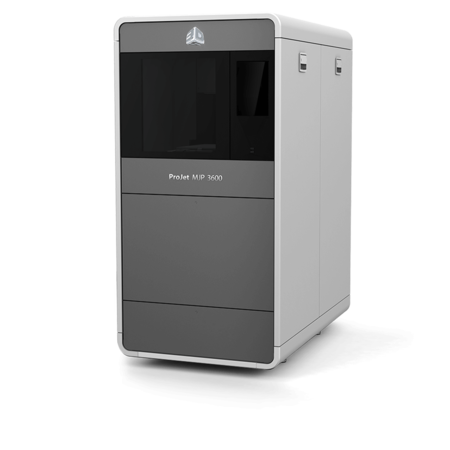Where Britain’s universities lead, British industry often soon follows. Additive manufacturing (3D printing) has long since left the lab and migrated to the factory floor as more and more companies use it as a low-cost option for short runs of parts.
One of the UK’s leading centers for academic excellence is using its recently acquired 3D Systems’ ProJet MultiJet Printer (MJP), on several innovative sciences and engineering projects. Designed for high productivity, precision and accuracy, the MJP printer enables the user to produce complex geometries with extremely fine texture detail at high build speeds.
Installed in 2009, the compact 3D printer is housed in Exeter University’s School of Engineering and is made available to both the university’s students and academics, and also to companies that wish to experience the benefits of high-definition 3D printing without making the upfront investment.
The machine is part of the School’s ‘industry-facing’ research unit, Exeter Advanced Technologies (X-AT).
“The ProJet complements our existing range of 3D printer platforms,” explains Mike Felstead, X-AT Manager, “and we’ve already received significant commercial interest in it. We work with a wide-range of commercial clients, from lone inventors to multinational corporations. Our first ProJet customer wanted a series of small plastic formers for electronic components and the machine was able to provide the short lead-time and the high-resolution they were looking for.”
“One of our research groups has an interest in modeling the electromagnetic response of a wide-range of micro-structured devices,” explains Dr. Hibbins. “Put simply, we fire microwaves at engineered surface structures and see how the microwaves respond. The wavelength of the microwave radiation being used is approximately 1 cm (0.4 in), so the structures and surface patterns undergoing tests also have to be much less than 1 cm in size in order to induce the artificial electromagnetic responses that we desire. Many of the structures are studied to investigate fundamental physical principles, potentially for use in military, aerospace or telecommunication applications.”
“Before we invested in the ProJet 3D printer we had to manufacture these structures in our mechanical workshop with more traditional processes,” says Dr. Hibbins. “But, the problem is that the samples we need often have fine and complicated surface features, which means that producing them on a CNC milling machine can be a very time-consuming and expensive process. We needed to find a solution that would enable us to produce one-off structures quickly and inexpensively.”
The MJP printer allows students to design a structure, download it to the machine and have a completed part to work with very quickly. All models used in the microwave research project are metal plated; the acrylic resin material used by the MJP printer is compatible with the plating process so, claims Dr. Hibbins. “Even a complex part with lots of fine detail is easy to manufacture and post process.”
Students at the university’s school of physics receive funding for research from companies including BAE systems, QinetiQ and DSTL, as well as the EPSRC (the research council that provides governmental funding for engineering and the physical sciences) working with electromagnetic radiation for defense or civilian applications, such as automotive radar. Now that the university has invested in the 3D printer, Dr. Hibbins is hoping to attract even more research sponsorship and is looking forward to investigating the limits of the machine’s capability.
“For example, we know that the MJP printer can easily produce an array of 200-micron holes. However, we want to get that down to 150 or 100 microns. If we can produce an array of holes of 100 microns in diameter, then it enables us to make samples for our terahertz experiments." Terahertz, he explains, is the middle-ground wavelength between radar microwaves and the visible part of the spectrum. "It’s the hot topic in terms of electromagnetism and it could be very useful for security applications. If we can actually make samples with feature sizes in this range we can push forward into this very exciting area of research.”
Exeter University does not market itself as an RP ‘bureau’, but this added expertise and manufacturing capacity means that it can now provide a comprehensive service for companies that need a fast-track introduction to 3D printing technology. “As word spreads and people hear what we can do we’re confident we’ll attract plenty more interest from industry,” says Felstead.
